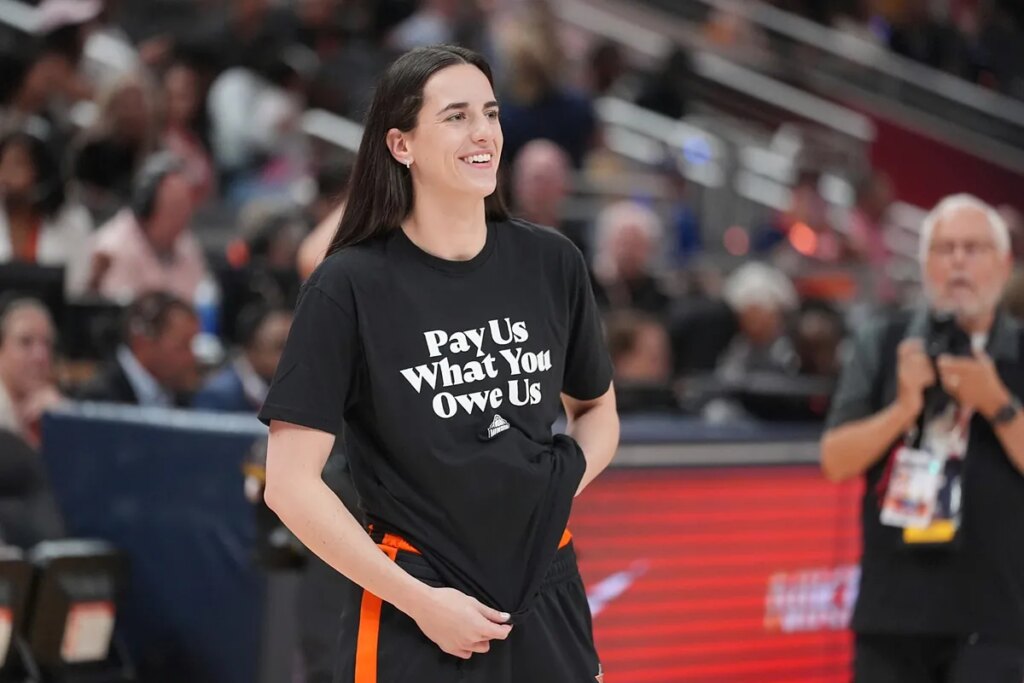The WNBA’s All-Star Game drew major fanfare this Saturday-but the celebration paused briefly when players took the court in T-shirts reading “Pay us what you owe us,” reigniting a long-standing battle over salaries and revenue.
Some of the league’s brightest stars gathered in Indianapolis for the midseason showcase, where Team West secured a 151-131 win and Napheesa Collier dropped a show-stopping 36 points. Yet behind the spectacle loomed a deeper issue: stalled contract negotiations amid growing calls for fair compensation.
Media reports indicate that negotiations have hit another roadblock. Players are demanding better pay, while team owners argue the league is still running in the red. Analysts suggest the issue is layered and complex.
As Beau Dure of The Guardian notes, “Evaluating athlete pay is notoriously tricky because sports accounting always includes a certain amount of voodoo.” He adds that this is especially true for the WNBA, “whose fortunes-literally and figuratively-are tied to the NBA’s, for better or worse.”
Attendance, TV deals, and financial growth
Dure reports that NBA team owners are pressuring Commissioner Adam Silver over the WNBA’s reported $40 million loss in 2024. Still, he questions the accuracy of those numbers, pointing out a surge in fan engagement that paints a different picture.
Attendance fell to around 7,000 after the pandemic, but by 2024-thanks in part to breakout stars Caitlin Clark and Angel Reese-it’s climbing back toward the pre-COVID average of 10,000 fans per game.
TV viewership has also surged. After generating zero revenue from broadcast rights in 2002, the WNBA now has a $60 million annual deal, projected to rise to $200 million soon via a new agreement aligned with the NBA.
Despite this growth, player salaries have remained stubbornly low-a frustration that sparked Saturday’s protest and continues to fuel heated negotiations.
A lopsided comparison
Dure highlights that the WNBA’s salary cap rose from $622,000 in 2003 to $1.5 million in 2025. However, when adjusted for inflation, the 2003 cap equates to roughly $1.1 million today-making the increase less impressive than it seems.
Altogether, WNBA players earn a combined $19.5 million per year, just a third of what NBA superstar Stephen Curry alone takes home.
Still, players aren’t asking for NBA-level paychecks. What they’re demanding, says Dure, is “fair wages that prevent most athletes from having to play overseas during the winter just to make ends meet.”
Saturday’s protest didn’t offer answers-but it thrust an old conversation back into the spotlight. The public remains divided, but growing support is evident for WNBA players seeking equitable treatment.
Read the full article here

